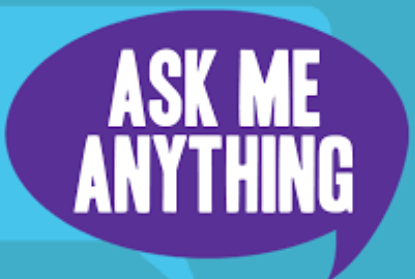- 1 Post
- 88 Comments

 0·5 days ago
0·5 days agoタイッツー is definitely taittsuu. Twitter doesn’t seem to use a katakana spelling. Your proposal of “tsuittaa” would be ツイッター. Same katakana but different order. There would be no reason to read Japanese from right to left. Might be an intentional pun though.
Edit: it’s https://taittsuu.com
They don’t owe you anything. Not sex, not a kiss, not a hug, not a second date, not even a smile. If the date goes well, you will get some or even all of those but if you try to force them, you will get nothing. Sure it can be disappointing if you put in a lot of effort and get nothing back but you will have to live with that. Sometimes people just aren’t compatible and sometimes a date just goes wrong because of a weird coincidence.
Be nice, even if the date doesn’t go as you wanted. Open communication goes a long way and chances are that the person you’re talking to is just as insecure as you are. Explain (not accuse) why you don’t think this situation will work out. If you’re lucky, you can turn the conversation around. If not, at least you’re ending the date in a civil way. That also (and especially) applies to talking on online dating platforms. Sometimes you can tell just from a conversation that things won’t go anywhere. Way too many people just drop the conversation and move on which can feel pretty rude. Be nice, explain what’s up, give them a friendly goodbye and then move on.
Those rules apply to both sides. You don’t owe them anything either, especially if they get rude. You should still try to be friendly in case there is a misunderstanding but try to get yourself out of an uncomfortable situation before it gets worse. Your safety is still priority number one.
Edit: some more
Don’t expect a relationship to last. Chances are it won’t. But this isn’t as pessimistic of a tip as you might expect. Even a single day of joy can be worth it if you manage your expectations. I’ve had a relationship crash and burn after seven years, I’ve had ones that lasted a couple of months and I’ve had someone ghost me after the second date. And still, all of them gave me amazing memories that I wouldn’t want to miss and they helped me grow as a person. Allow things to grow on their own and enjoy the process. Maybe you will marry that person. Maybe you’ll date them for a few months or years. Maybe you will never get past second base but stay platonic friends. Maybe you will spend the most amazing day of your life with them and then never see them again because you accidentally spilled something over their favorite t-shirt.
Just because you have IPv6 enabled doesn’t mean you don’t have IPv4. Both can coexist on the same network and the same device so your router can be 192.168.0.1 and some IPv6 address at the same time.
On top of that, many routers can be reached by a well-known hostname or domain, depending on their manufacturer. For example, AVM Fritz!Box routers (extremely popular in Germany) automatically resolve http://fritz.box to their own IP address no matter what that IP address is.
In the end, read the manual or the sticker on the device, same as you would have to do with IPv4 to figure out which subnet it is configured with.
I’ll give it a shot. Not quite ELI5 but “Explain like I know what a phone number is”. For the most important answer, see the last paragraph.
IP addresses are a bit like phone numbers. To send data to some computer, your computer attaches that number and sends the data packet on its way. With IPv4, an address is four bytes long, usually represented as four numbers from 0-255 separated with dots. That gives us a bit under 4.3 billion possible addresses which seemed enough when the system was invented and larger organizations could even reserve entire address ranges and some ranges got reserved for special purposes (for example, all 127.x.x.x addresses mean “send this to myself” while 192.168.x.x and 10.x.x.x are meant for local, non-public networks). Reserving these ranges is convinient when you need multiple machines connected to the internet but is very inefficient as these ranges need to be a power of two in size (256 is common), so you may get more addresses than you need and the rest stays unused.
The first solution was “Network Address Translation” (NAT). Basically, every household or organization gets a single public IPv4 address and every device on your network has a private address. On outgoing connections, your router replaces the (private) sender address with its public address and remembers which private address belongs to that connection so it can correctly forward any replies. For incoming connections, the router needs a list of rules to tell it what to do. For example something like “Everything on port 80 goes to 192.168.0.42”. This worked for a while as most people make only outgoing connections and even many organizations can simply decide locally what to do with an incoming connection based on the received data so they wouldn’t need multiple addresses.
After a while, it was clear that even with this workaround we would run out of addresses sooner or later. Providers tried giving their customers a different address every time they connected to the internet so they could reuse the address for someone else when the customer disconnected. This worked well when people only connected when they needed it but these days we’re usually online 24/7.
So in the end, the only solution was to add more addresses. For our current needs, doubling the length would be more than enough but to be on the safe side, it was decided to quadruple the address length to a total of 16 bytes. This gives us about 340 undecillion unique addresses. Still not enough to give a unique address to every atom in the universe, not even enough for every atom on earth but still a lot. We can give every human an address range many times larger than the total address space of IPv4.
Does this mean that NAT is dead or that all your devices are visible from outside your network? Absolutely not. It means you can do that if you want. If your provider gives you a large address range, you can give each of your devices a different one and tell your router to forward everything. But you can also still use a single public address and/or tell your router to apply certain rules for what to do with incoming connections. There are also still address ranges that are meant purely for local use, equivalent to what 192.168.x.x and 10.x.x.x were in IPv4.

 0·10 days ago
0·10 days agoLast week I found out that there are off-brand batteries for my DSLR cameras that can be charged directly through USB-C so I don’t have to pack a different charger for every camera. Let that sink in!
Overall pretty great, in a pinch I can charge my laptop on a Nintendo Switch power supply. Now if I could just upgrade the last few remaining Micro-USB and Lightning devices without spending a fortune…
How was your own upbringing? In hindsight, what do you wish your parents would have done differently?
There are 36 million Ukrainians. I doubt you’ll find any property that they all have in common, except for being humans.

 0·14 days ago
0·14 days agoHonestly, that was the option I had hoped for when I made that joke. I‘m happy for you.

 0·14 days ago
0·14 days agoSooo… have you decided yet, which one you want to be?
Even worse: with an odd number of sides, there are cases where none is up.

 0·17 days ago
0·17 days agoFor me, the key was finding a regular time during the day whe I do the lessons. That’s why I recommended you do it during the ad breaks.

 0·17 days ago
0·17 days agoLearn a language. Ad breaks are long enough for one or two lessons in Duolingo and probably other apps as well.
Asklemmy is not a support community, you might have more luck in photography related communities.
That being said, you basically answered your own question. Your integrated flash is either stuck or blocked. Hard to tell without seeing it in person. You might try to help the camera by carefully pulling on the flash while holding the flash button (on the left side of the camera body). Maybe there is some dirt trapped in the hinge. If you can get it open (please, please, please don’t break the hinge), try carefully cleaning it.
But here comes the kicker: the integrated flash on most cameras is absolute garbage and I’d recommend you just disable it. There is a reason why high end cameras don’t even have an integrated flash. An integrated flash is 20-30 times smaller than even the most basic external flash so it makes extremely hard shadows. If you can afford it, buy a cheap external flash (I’d recommend one from Yongnuo) and a mini softbox that you can put on the flash. It will make your photos A LOT better for not that much money.
If you’re interested, I can dig out my old 760D and take some comparison shots between internal flash, external flash without softbox and external flash with softbox.

 0·19 days ago
0·19 days agoHow would software support improve?
- Less fragmentation between multiple different ways to install software (Ubuntu-derived distributions currently have apt, flatpack and snap while some software is available in neither so I have to manually download a binary or even compile it myself)
- Better support for certain use cases like… I don’t know… fractional scaling which Windows has supported since Vista
- Simplified system settings. People make fun of Windows splitting settings between the “new” settings app and the old control center. On most Linux distributions, I may have to set some things multiple times for my window manager, my compositor and so on… again, scaling is the main culprit here but themeing has similar problems.
Basically fix the few things that work better in Windows, even for power users, ideally without sacrificing the flexibility that makes Linux so awesome.

 0·19 days ago
0·19 days agoPosts within the same community are synced and you can see communities from different instances. The point is that news@instance1 and news@instance2 are different communities even though the names are similar.
The counter argument is that reddit has the same problem even without federation. /r/games, /r/gaming and /r/gamers are three different subreddits with very similar names and you have no way of knowing which one is the “main” gaming community unless you check each of them. With time, this will probably sort itself out with lemmy as well. It just takes time for one of the similar communities to become the de facto standard.

 0·21 days ago
0·21 days agoA friend recently commented “Of course you have ADHD! Just look at your apartment! Spots that are important for your hobbies are designed with surgical precision and everything else slowly sinks into chaos.”
He might be right.

 0·22 days ago
0·22 days agoiPhone 12 Mini. I loved my 5S and first gen SE and I still can’t understand why phone manufacturers these days insist on making tablets and calling them phones. I just want something that fits in my pocket. I would probably have switched to Android years ago but I haven’t found a single Android phone with a small form factor, decent performance and decent camera.



Wanna bet if Tesla gets an exception?